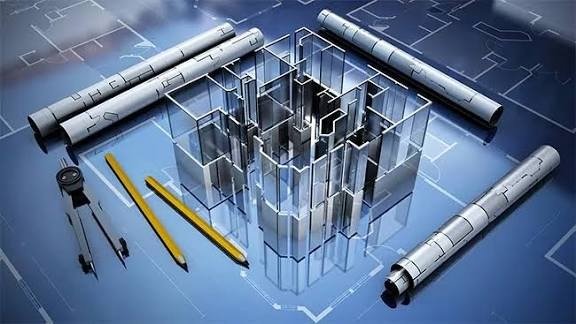The topping-off ceremony marks a construction project’s highest point and celebrates months of planning and craftsmanship. Beyond the tradition, roof installation is a crucial phase that transforms the structure into a weatherproof shelter. Precision, expertise, and material choices during this stage are essential for the building’s durability, energy efficiency, and long-term performance.
The Importance of a Solid Roof
Your roof serves as the first line of defense against nature’s elements. More than just a covering, it’s a complex system engineered to shed water, resist wind, provide insulation, and support additional loads like snow or equipment.
A well-designed roof protects the entire structural investment beneath it. Water infiltration from a compromised roof can cause extensive damage to framing, insulation, electrical systems, and interior finishes. The repair costs from roof failure often exceed the original installation cost by several times over.
Energy efficiency represents another crucial consideration. The roof assembly significantly impacts heating and cooling costs throughout the building’s lifetime. Proper insulation, ventilation, and reflective materials can reduce energy consumption by 20-30%, making the initial investment in quality roofing materials financially beneficial over time.
Structural integrity depends heavily on proper roof installation. The roof system must transfer loads safely to the building’s frame while maintaining its own structural stability. This requires careful engineering and precise installation techniques that account for local weather conditions, building codes, and long-term performance expectations.
Roofing Materials and Their Benefits
Modern construction offers numerous roofing material options, each with distinct advantages suited to different climates, budgets, and aesthetic preferences.
Asphalt Shingles
Asphalt shingles remain the most popular residential roofing choice due to their affordability and ease of installation. Available in architectural and three-tab varieties, they offer good weather resistance and come in numerous colors and styles. Quality asphalt shingles typically last 20-30 years with proper maintenance.
Metal Roofing
Metal roofing systems provide exceptional longevity, often lasting 50+ years. They excel in areas with severe weather, offering superior wind and hail resistance. Metal roofs reflect solar heat effectively, reducing cooling costs in hot climates. While the initial investment is higher, the long-term value often justifies the expense.
Clay and Concrete Tiles
Tile roofing offers outstanding durability and distinctive aesthetic appeal. These materials perform exceptionally well in hot, dry climates and provide excellent fire resistance. Properly installed tile roofs can last 75-100 years, though they require stronger structural support due to their weight.
Slate
Natural slate represents the premium option for longevity and beauty. With proper installation and maintenance, slate roofs can last over 100 years. They provide excellent weather resistance and unique aesthetic appeal, though they require specialized installation expertise and significant structural support.
Synthetic Materials
Modern synthetic roofing materials offer engineered solutions that mimic traditional materials while providing enhanced performance characteristics. These products often combine the aesthetic appeal of slate or wood with improved durability and reduced maintenance requirements.
Read Also: 4 Things to Consider When Choosing a New Roofing Material
The Installation Process
Professional roof installation follows a systematic approach that ensures both immediate weather protection and long-term performance.
Planning and Preparation
The installation process begins with thorough planning and material preparation. Contractors assess weather conditions, coordinate material deliveries, and prepare the work area for safe, efficient installation. This phase includes installing safety equipment and establishing material staging areas.
Deck Preparation
The roof deck must be properly prepared before any roofing materials are installed. This involves checking for structural integrity, ensuring proper ventilation, and installing underlayment materials that provide secondary weather protection.
Installation Sequence
Roofing materials are installed following specific sequences that ensure proper water shedding and weather resistance. Starting materials are typically installed at the lowest roof points, with each subsequent course overlapping the previous one to create a continuous weather barrier.
For a new roof, such as those in Tooele, local building codes and climate considerations influence specific installation requirements. Professional contractors understand these regional requirements and adjust their techniques accordingly.
Quality Control
Throughout the installation process, quality control measures ensure proper material placement, adequate fastening, and compliance with manufacturer specifications. This attention to detail during installation prevents future problems and validates warranty coverage.
Final Inspections
Completed installations undergo thorough inspections to verify compliance with building codes and manufacturer requirements. These inspections cover material installation, flashing details, ventilation adequacy, and overall workmanship quality.
Ensuring Longevity and Durability
Maximizing roof system lifespan requires attention to several key factors beyond material selection and installation quality.
Proper Ventilation
Adequate ventilation prevents moisture accumulation and temperature extremes that can damage roofing materials and building structures. Balanced intake and exhaust ventilation systems maintain optimal conditions in roof assemblies year-round.
Regular Maintenance
Routine maintenance programs identify and address minor issues before they become major problems. Annual inspections, gutter cleaning, and prompt repair of damaged materials significantly extend roof system lifespan.
Professional Installation
The expertise of the installation crew directly impacts long-term performance. Professional contractors understand material characteristics, local code requirements, and proper installation techniques that ensure optimal results.
Climate Considerations
Selecting materials and installation methods appropriate for local climate conditions prevents premature failure and performance problems. Contractors experienced in regional conditions provide valuable guidance for material selection and installation details.
Warranty Protection
Understanding warranty coverage and requirements helps protect the investment in roof systems. Many material warranties require professional installation and regular maintenance to remain valid.
Conclusion
The topping-off phase signifies the transition from construction to long-term building performance. Using quality materials, expert installation, and proper maintenance ensures roofs provide reliable protection, energy efficiency, and durability. Thoughtful decisions at this stage set the foundation for a building’s success for years to come.
You May Also Like: How Modern Home Features Are Shaping Today’s Real Estate Market










